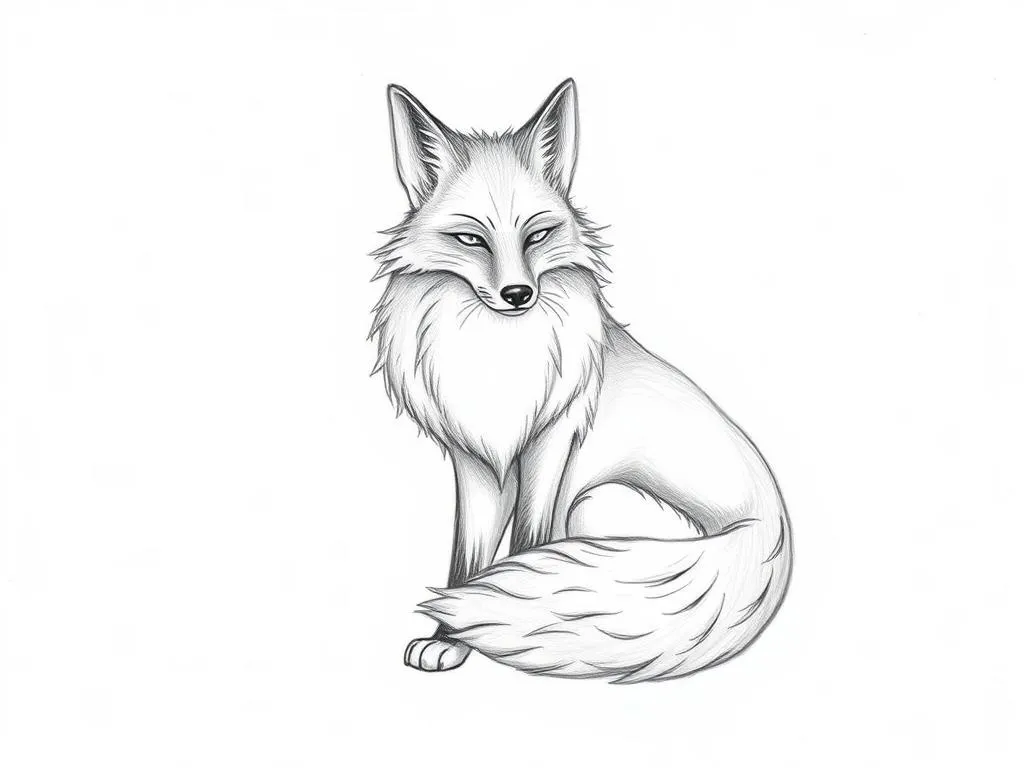The Tibetan Fox: A Symbol of Adaptability and Intuition

Disclaimer: Some images on this website are AI-generated artworks and may not accurately represent real animals.
The Tibetan fox is not only a fascinating animal due to its unique characteristics and habitat but also serves as a powerful symbol in various cultural and spiritual contexts. Understanding its symbolism and meaning can provide insights into adaptability, intuition, and our connection to nature.
Understanding the Tibetan Fox
Species Overview
The Tibetan fox (Vulpes ferrilata) is a small canid native to the high-altitude regions of the Tibetan Plateau. Typically found at elevations of 3,000 to 5,500 meters, this species has adapted remarkably to its harsh environment.
Characteristics: The Tibetan fox has a slender body and long legs, which help it navigate the rugged terrain. Its thick fur offers insulation against extreme cold, while its sharp sense of hearing aids in locating prey, primarily small mammals and birds.
Habitat: Preferring open grasslands and scrublands, the Tibetan fox thrives in areas where it can utilize its keen hunting skills. Its ability to survive in remote and inhospitable regions speaks volumes about its adaptability.
Behavior: Socially, these foxes are often solitary or found in small family groups. They communicate through a series of vocalizations, including barks and howls, and are known for their playful behavior, particularly during the mating season.
Cultural Significance
In Tibetan culture, the Tibetan fox occupies a unique place, often woven into folklore and mythology. It is regarded as a creature of wisdom and cunning, embodying qualities that resonate deeply with the Tibetan way of life.
The fox’s presence in stories often highlights themes of survival, cleverness, and the importance of intuition. It serves as a reminder of the balance between human existence and the natural world, reinforcing the notion of living harmoniously with nature.
Physical Attributes
The Tibetan fox is distinguished by several unique features that set it apart from other fox species.
| Feature | Description |
|---|---|
| Fur Color | Light brown with a distinctive blackish or grayish hue on the face and legs |
| Ears | Large and pointed, enhancing hearing capabilities |
| Tail | Long and bushy, used for balance and communication |
| Size | Medium-sized, typically weighing between 5 to 10 kg |
| Eyes | Dark and expressive, contributing to its keen observational skills |
These physical traits not only aid in survival but also contribute to the fox’s mystical allure in various cultural narratives.

Symbolism & Spiritual Meaning
Adaptability
The Tibetan fox symbolizes adaptability in the face of adversity. Living in one of the most extreme climates on Earth, this fox has evolved to thrive where many other species cannot.
In life, the ability to adapt is crucial. Whether it’s in personal challenges or professional endeavors, the Tibetan fox teaches us to embrace change and find creative solutions. When faced with obstacles, we can look to the fox as a model of resilience, encouraging us to navigate our unique landscapes with grace.
Intuition
The fox serves as a powerful guide for developing intuition and inner wisdom. Its keen senses and ability to read its environment reflect the importance of trusting one’s instincts.
In spiritual practices, the Tibetan fox is often seen as a symbol of insight. Engaging with the energy of the fox can inspire individuals to look inward, fostering personal growth and self-awareness. By listening to our instincts, we can make decisions that align with our true selves.
Mystery and Illusion
In folklore, the Tibetan fox is often portrayed as a trickster, embodying mystery and the concept of illusion. This aspect of its symbolism reminds us that not everything is as it seems.
It encourages us to look beyond surface appearances and seek deeper truths. The fox’s cunning nature teaches valuable lessons about adaptability and the art of strategy, suggesting that we should remain vigilant and open-minded in our pursuits.
Connection to Nature
The Tibetan fox embodies a harmonious connection to the natural world. Its existence is a testament to the delicate balance of ecosystems and the importance of biodiversity.
This connection serves as a powerful reminder of our responsibility to protect the environment. The fox’s ability to thrive in its habitat encourages us to cultivate respect and appreciation for all living beings and to recognize our role in the intricate web of life.
Tibetan Fox in Dreams
Interpretation of Dreams
Dreaming of a Tibetan fox can carry significant meanings, often reflecting aspects of your personality or current life situations. The presence of the fox in your dreams may suggest a need for adaptability or the importance of trusting your instincts.
Messages from the Subconscious
Dreams featuring the Tibetan fox may provide insights into your subconscious, revealing hidden fears, desires, or truths. These dreams often serve as a guide, nudging you toward self-discovery and growth.
Common Dream Scenarios
Analyzing specific dream scenarios involving the Tibetan fox can uncover deeper meanings.
| Dream Scenario | Possible Interpretation |
|---|---|
| Seeing a fox in the wild | A call to embrace your natural instincts |
| Chasing a fox | A desire for freedom or a need to explore your creativity |
| Being followed by a fox | A reminder to trust your intuition in decision-making |
| Foxes playing together | A sign of social harmony and the importance of relationships |
| A fox in a challenging situation | Encouragement to adapt and find solutions to life’s challenges |
Understanding these dream interpretations can help you unlock the wisdom that the Tibetan fox represents.
Modern Interpretations
Environmental Symbolism
In contemporary contexts, the Tibetan fox symbolizes ecological balance and the importance of conservation. As habitats change and species face extinction, the fox serves as a reminder of the need for environmental stewardship.
Through various initiatives aimed at protecting wildlife, the Tibetan fox has become an emblem of the broader movement for ecological awareness. Its adaptability highlights the resilience of nature, urging us to support conservation efforts.
Cultural Adaptations
The symbolism of the Tibetan fox has evolved in modern spiritual practices. Today, individuals often draw upon its qualities for guidance in personal growth and development.
Workshops, meditations, and rituals centered around animal symbolism frequently include the Tibetan fox, emphasizing its role in fostering intuition and adaptability. This contemporary interpretation reinforces the timeless relevance of the fox’s teachings.
Art and Literature
The Tibetan fox has made appearances in various forms of modern media, from literature to visual arts. In storytelling, the fox is often depicted as a clever and resourceful character, embodying traits of wisdom and cunning.
These representations serve to keep the symbolism of the fox alive in cultural consciousness, encouraging ongoing reflection on its meanings and lessons. Artists often use the fox to challenge perceptions, drawing attention to themes of nature, spirituality, and adaptability.
Key Takeaways
- The Tibetan fox symbolizes adaptability, urging us to embrace change and navigate challenges with resilience.
- It serves as a guide for developing intuition, encouraging self-awareness and inner wisdom.
- The fox represents mystery and illusion, teaching us to look beyond appearances and seek deeper truths.
- It highlights the importance of our connection to nature, reminding us of our role in protecting the environment.
- Understanding the symbolism of the Tibetan fox can aid in personal growth and spiritual journeys.
Conclusion
The enduring significance of the Tibetan fox in cultural and spiritual contexts is a testament to its rich symbolism. As we reflect on its teachings, we are encouraged to connect with the wisdom of the fox in our daily lives.
By embracing adaptability, nurturing our intuition, and fostering a connection to nature, we can navigate the complexities of our existence with greater ease and understanding. The Tibetan fox invites us to embark on a journey of self-discovery, reminding us that we are all part of a greater whole.







